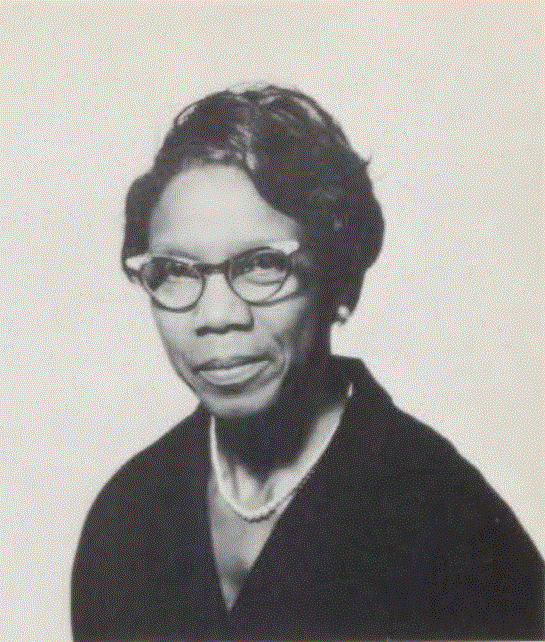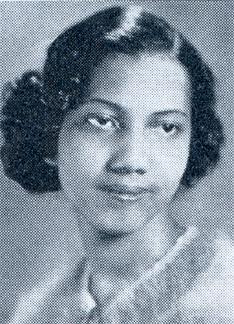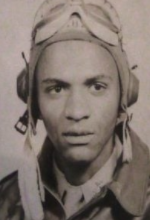Dixon, Eva Lazetta (M.S., Home Economics Education, 1941
Iowa State College Dissertation Title: Technical words in ninth grade food references common to general science and home economics courses, 1941
Iowa State University Library Digital Repository Link: https://lib.dr.iastate.edu/rtd/17733
Archer, Eleanor Rebecca Powell (B.S., Textiles and Clothing, 1941)
Eleanor Rebecca Powell was born in Des Moines, IA, on 23 December 1918 to Roy Estill (aka “Estelle”) Thanel Powell and his wife Jeanne Payton. At the time, Roy Powell was employed in the home of Dr. Oliver J. Fay, a local surgeon and ISC alumnus married to Helen Louise Knapp, daughter of one-time ISC President Seaman A. Knapp (Zehner, 2004). When Eleanor was still young, her parents divorced, and Eleanor lived with her grandparents, her mother and stepfather, Clyde Morris, in Des Moines. She graduated from North High School in 1936. She opted to enter Iowa State College in home economics that fall.
Once she began attending ISC, Ms Powell first lived at the home of the Walter Madison family at 1204 Third Street. Word around campus had reached Eleanor that Mrs. Madison “on Third St. and Hazel Avenue in Ames…rented rooms to students of color for $3 a week” (Taylor, 2001, p. 48). Eleanor later lived with John and Nellie Shipp at 118 Sherman Avenue and, finally, with a White roommate at 153 Hyland Avenue.
During her undergraduate years, Eleanor also established a lifelong friendship with Eva Dixon, another African American ISC student. According to Kay Ann Taylor, who has written a biographical dissertation on Ms. Powell, “One of the graduate females, Eva Dixon, was there [at ISC] to complete her master’s degree in home economics education. Eva and Eleanor belonged to the same sorority [Delta Sigma Theta] and Eva was instrumental in assisting Eleanor with her successful application for her first job with the National Youth Administration (NYA) in Kansas City after graduation from Iowa State [in 1941].” (Taylor, 2001, p. 54).
The NYA position involved supervising and teaching other young women in the sewing of dresses, but it lasted only four and a half months. By the end of December, the New Deal program had been phased out and Eleanor was left unemployed, returning home to Des Moines to live with her parents. Though she had never planned to teach, she saw that as an opportunity. While working evening shifts in early 1942 at Des Moines’s Boyt Harness Factory, Eleanor took education courses at Drake to ensure she could be licensed. Following her licensure, she applied to numerous positions and was finally employed at “Georgia Normal
College, which became Albany State College the following year. She was offered a 12-month contract at a salary of $ 1200 a year (Taylor, 2001,p. 75). Although experiencing trepidation about teaching at a segregated school in the Jim Crow South, Eleanor enjoyed teaching and heading up the clothing and art department, for the 1942-43 school year despite the problematic sanitation system on campus and the ever-present mosquitoes that brought malaria with them (Taylor, 2001).
From Georgia Normal, for the 1943-44 school year, Eleanor moved to better pay for a home economics faculty position at Paine College in Augusta, Georgia. She became part of an integrated faculty at the historically Black college. The summer after teaching at Paine, she joined family in Salt Lake City, Utah, and took a job as a secretary for the segregated United States Organization (U.S.O.) Catholic division. (Taylor, 2001).
Following this summer job, Eleanor took up her first high school teaching position at a high school she had respected since learning about it in college. According to Taylor, “Sumner High School, the only all Black segregated school in Kansas, required its teachers to have two years of teaching experience in addition to a masters degree” (2001, p. 82). Although hired to teach at Sumner, Elanor first had to cover seventh, eight, and ninth grade clothing classes for a year (1944-45) at Northeast Junior High School, filling in for a teacher on leave. When she finally began her nine years of teaching at Sumner in fall 1945, Eleanor taught clothing and family living, later focusing on clothing only. While teaching, she completed her M.A. in Textiles and Clothing by doing summer classes (1946-49) at Teachers College, Columbia University, in New York City.
In 1951, Eleanor met Jean N. Archer, a D.V.M. alumnus of ISC (1949), on a trip home to Des Moines. She and Archer, a Haitian, married on 30 May 1954 in St Ambrose Catholic Cathedral in Des Moines, but they had to hold the reception in the downtown YMCA at 9th and High. As Taylor explains, “In 1954, as in the years before and following, practices of discrimination were the rule and Blacks were barred from using the hotels and most other facilities that were controlled and owned by the White population sector” (Taylor, 2001, pp. 106-7). The marriage meant the end of Eleanor’s employment at Sumner, which did not allow female instructors to marry. The couple moved to Chicago in June 1954, where Jean was stationed in the U.S. Army. He gained his American Citizenship shortly after their arrival (Taylor, 2001).
After time as a military family stationed in Japan, Eleanor, Jean and their children returned to the US in the wake of troop reductions. The family stayed with Eleanor’s parents in Des Moines, and in 1958 Eleanor returned to Iowa State to work on updating her Iowa teaching credentials during summer session. She completed that credentialing in 1960 and took a job at Amos Hiatt Junior High School in Des Moines. Eleanor taught there until 1978, with Jean taking a series of jobs around the country in his field. The couple eventually divorced in 1976. In 1978, Eleanor took the job that she would hold for 14 years, until her retirement in 1982: teaching home economics at Callanan Junior High School in Des Moines.
After time as a military family stationed in Japan, Eleanor, Jean and their children returned to the US in the wake of troop reductions. The family stayed with Eleanor’s parents in Des Moines, and in 1958 Eleanor returned to Iowa State to work on updating her Iowa teaching credentials during summer session. She completed that credentialing in 1960 and took a job at Amos Hiatt Junior High School in Des Moines. Eleanor taught there until 1978, with Jean taking a series of jobs around the country in his field. The couple eventually divorced in 1976. In 1978, Eleanor took the job that she would hold for 14 years, until her retirement in 1982: teaching home economics at Callanan Junior High School in Des Moines. (Taylor, 2001). Until her death 23 March 2013, Eleanor continued to be active in her community and church organizations. Her obituary in the Des Moines Register (31 March 2013) sums up her involvement, “For many years Eleanor was active with numerous organizations, including Delta Sigma Theta, Inc., Alpha Delta Kappa sororities and NAACP in addition to being active with St. Paul AME Church where she was also a member. She lived out her passions for travel, fashion, teaching and giving back to the community.” She is buried at Glendale Cemetery in Des Moines, IA.
Sources
Taylor, Kay Ann. (2001). Eleanor’s story: Growing up and teaching in Iowa:
one African American woman’s experience [Doctoral dissertation, Iowa State University].
Zehner, Roseanna. (2004, 2 Mar). Oliver J. Fay, M.D., Fay, Schreimer, Schreiner, Knapp, Hotchkiss. IA GenWeb Project. Retrieved from http://iagenweb.org/boards/allamakee/biographies/index.cgi?rev=47148
Daniels, Walter Thomas (M.S., Civil Engineering, 1932; Ph.D., Engineering Science and Mechanics, 1941)
Iowa State College Dissertation Title: Deflection of rigid frames stressed beyond the yield point; The effects of delayed curing on the compressive strength and permeability of cement mortars, 1941; 1932
Iowa State University Proquest Access: https://www.proquest.com/docview/301853901
Sources
Biography available at HBCU Connections at Iowa State University : Walter T. Daniels ( http://hbcuconnections.iastatedigital.org/Walter_T._Daniels )
Bowman, James Everett (Attended ISC, Veterinary Science Program, 1940-1944)
James Everett Bowman was born to Floyd and Adelaide Bowman in Des Moines, Iowa, on 25 October 1922 and graduated from North High School in 1940. While at Iowa State he lived at various locations in Ames: 218 Lincoln Way (1940-1941), 2512 ½ Lincoln Way (1941-1942), and 117 Welch Avenue (Fall 1942).
Like other men of his day, he registered for the draft, but according to his story, he was told that since there were so few Negroes in college, as long as he kept his grades up, they wouldn’t send him to war. However, Bowman said he still felt the need to serve: “‘I’d go to church and see my friends’ parents and they’d say, “Jimmy what are you still doing here? My son is over there getting shot at.” Well, I got to thinking about that and decided I wanted to carry my load. I was thinking, “well, I do want to fly an airplane”‘” (“James Everett Bowman,” 2019).
After the bombing of Pearl Harbor, which he heard about while in the ISC library, Bowman continued to think about enlisting or at least doing his part in the war effort. He left his study of Biology at Iowa State and worked at the Des Moines Ordnance Plant for a time as a janitor, then as a chemist at the Ford plant. He finally entered the Army Air Corps in 1943 at Camp Dodge, Iowa, and was sent to Biloxi, Mississippi, for his training. He survived a plane crash in South Carolina before going on to complete his Class 44-K-SE Tuskegee Airmen training on February 1, 1945, becoming a flight officer. Bowman didn’t see battle because the war ended just a few months later, but his success helped prove that Blacks were capable of piloting aircraft.
Upon returning to Des Moines, Bowman obtained a B.S. from Drake University. Turned away by Des Moines schools in 1947, he taught education and psychology at Wiley College in Marshall, Texas, while obtaining a master’s degree there in 1949. Later, he returned to Des Moines and taught science at Weeks Middle School and completed his doctorate at Drake in 1975. He took on administrative roles in the district and eventually become the first Black Assistant Superintendent of Instruction for Des Moines Public Schools. Active in a number of community organizations, Bowman also lectured nationally on multicultural education, black history, and the experiences of the Tuskegee Airmen.
With his wife, Gloria, the two raised two daughters, Linda and Gale. Linda (Bowman) Lane was also a former Des Moines schools administrator. Bowman died on 13 January 2014, in Pittsburg, Pennsylvania.
Sources
Photo Credit: https://cafriseabove.org/james-everett-bowman/
James Everett Bowman. (2019, June 6). CAF Rise Above. https://cafriseabove.org/james-everett-bowman/




